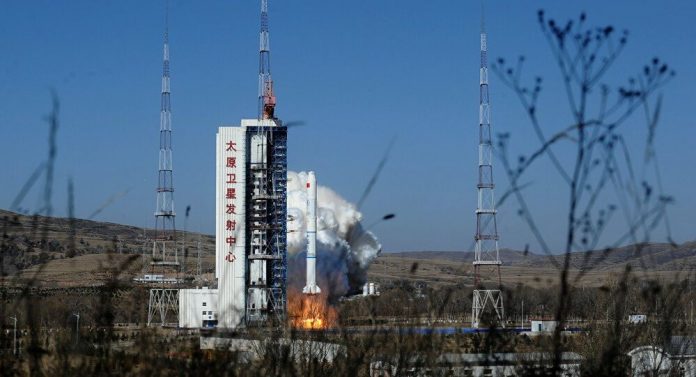This article is written by Rishi Raj Maheshwari, an advocate practising at Rajasthan High Court.
Table of Contents
Introduction
Amidst Coronavirus Pandemic, the Launch of China’s March 5B rocket into the lower earth orbit, has recommenced the space race among the nations. The Successful launch of the rocket has raised the hopes of the Beijing Government that the rocket may be used to transport the astronauts to the permanent space station which is planned to be completed by the year 2022 and resultantly to the Moon. The launch of the rocket has further escalated the existing cold war between China and the west.
The increasing activities in space have changed the dimension of the laws governing the Space in the present time. Perhaps, the recent development in the Laws of Space and the acute space race has raised the serious cardinal question that, whether the International Space Treaties are requisite enough in handling the commotions of the Sovereign States.
Development of Space Law: Background and History
The technological and scientific advancement and rapid increase in the space race among the nations required an international platform to regulate the space transactions and sustainably develop the outer space. By and By, the United Nations developed the United Nations Office for Outer Space Affairs.
The United Nations Office for Outer Space Affairs was initially created as a small expert unit within the United Nations Secretariat to service the ad hoc Committee on the Peaceful Uses of Outer Space, established by the General Assembly in its resolution 1348 (XIII) of 13 December 1958.[1] The present office of the UNOOSA is situated at Vienna, Austria.
The initial objective to establish the United Nations Office for Outer Space Affairs was to aid and provide assistance to the ad hoc Committee on the Peaceful Uses of Outer Space to explore the legal, scientific and Technological angle for sustainable development of outer space activities and space laws for the betterment of the world.
The predominant roles and responsibilities conferred upon the UNOOSA are to promote International Corporation for the pacific use of outer space. The other duties bestowed upon UNOOSA is to prepare and distribute reports, research and other publications on various fields of space science and technology applications and international space law. UNOOSA also conducts international workshops, training courses and pilot projects on topics that include remote sensing, satellite navigation, satellite meteorology, tele-education and basic space sciences for the benefit of developing nations.[2]
Formulation of International Policies and Treaties
The concept of Space Law was coined in the year 1919 when the International law recognized the sovereignty of air space of each state just above their respective territory. The Chicago Convention held in 1944 further developed the branch of law and construed various rules and regulations in consideration to air space.
The world witnessed the development of the United Nations Office for Outer Space Affairs making the air space res communis. By now, the United Nations Office for Outer Space Affairs has adopted five treaties which is commonly referred to as the “five United Nations treaties on outer space” that are Outer Space Treaty, The Rescue Agreement, The Liability Convention, The Registration Convention and the last one being the Moon Agreement[3] further leading to development and advancement of Space Laws.
Evolution of National Space Law
The Development of the International space law ultimately begets the formulation and evolution of various national laws vis-à-vis air space. The need and urgency of the national space laws was in reference to increasing partaking of private entities in space activities. Therefore, a requisite unified law was required at the state level to regulate the space activities. Countries that have incorporated national space legislations have differed from one another in dealing with national space activities.
More or less, every country has adopted and enacted their own legislations governing their space activities. The United States of America has enacted National Aeronautics and Space Act, 1958[4], the other acts include Commercial Space act, Commercial Space Launch Act and Communications Act.
Norway is one of the countries to incorporate the space legislations even before becoming the party to the outer space Treaty. The Norwegian act on space activities passed in the year 1969[5] is the law regulating space transactions in the Country.
The list of countries that have enacted the national space legislations is inclusive but not exhaustive of Sweden, Australia Ukraine, United kingdom, Brazil, Netherlands.

Laws of Space in India
Hitherto, there is no specific legislation governing the commercial space activities in our country. Still and all, the Draft Space Activities Bill, 2017 is pending before the consideration of parliament. The Bill aims to regulate not only governmental space transactions but also the private activities and with the ulterior objective to promote Indian Space Activities.
The Bill provides for establishment of a regulatory mechanism through an appropriate body, by the Central Government for the purpose of authorization and licensing of space activities. The provision on liability for damages caused by space activities of licensee provides for a risk sharing mechanism, by which the central Government may determine the quantum of liability to be borne by the licensee.[6]
India has to its credits the successful launch of its Satellite “Aryabhatta” on 19.04.1975. Our country further launched SLV-3 in JULY 1980 and Polar Satellite Launch Vehicle on 15.10.1994 and in the same series the GSLV. India in moving ahead for becoming the superpower of space has carried out various missions including Aditya, Mangalyaan, Chandrayaan, Gaganyaan etc.
Space and Conflicts
Although, the space war may sound like a fiction, yet several incidents in the recent scenario have raised serious consideration of the issue. The evolution of the space race is as old as that of the Cold War between the Soviet Union and US, which led to creation of space weapons.
The first Gulf War in 1991 is often referred to as the first space war, despite the fact that the same was not fought in outer space. It is said so, because the United States and other allied forces relied on GPS techniques and other space technology to carry out the war.
In the face of several international treaties, none of the treaties deals in regulating the mass destruction weapons in outer space including satellite missiles. Due to which, the situation in outer space has stressed.
The World has witnessed the development of Anti Satellite Weapons (ASAT)[7] in the recent decade. After the United States of America, China and Russian Federation, India vide Mission Shakti has illustrated their abilities of Anti Satellite weapons to the entire earth. Development of space war weapons in the Nations like Iran and North Korea has alarmed the situation.
It is further relevant to note that, the developments and evolutions of Co-orbital Weapons, Electromagnetic pulse and radiation weapons, other threats like cyber attacks, dazzling of data has heated the space weapons race. Jammers, Spoof satellite Signals and cyber attacks have tensed the situation and led a step forward for Space Warfare. The United Nations at several instances has raised the voice of disarmament policies for Space weapon warfare.
The newly minted controversy of Russian Federation satellites as a spy over the U.S. shifting the passive mode of the U.S. to actively defending the satellites and now China’s rocket launch amid Coronavirus Pandemic has triggered the space warfare.
Conclusion
The increase in the construction and evolution of the space weapons and warfare situations is alarming. The need of an hour is that the international organizations like UNOOSA to develop and enact jus inter genetus laws to regulate the actions of the member states. The nations at their own sovereign capacity, rather focusing on developing space weapons should focus on maintaining international cooperation at beyond the globe i.e. space and further to regulate the actions of commercial space activities in their sovereign territory.
References
- About Us (UNOOSA) https://www.unoosa.org/oosa/en/aboutus/history/index.html
- Roles and Responsibilities https://www.unoosa.org/oosa/en/aboutus/roles-responsibilities.html
- Space Laws Treaties and Principles https://www.unoosa.org/oosa/en/ourwork/spacelaw/treaties.html
- National Aeronautics and Space Act, Public Law 85-568, 85th Congress, H.R. 12575, 29 July 1958; as amended through 1983; 72 Stat. 426; Space Law – Basic Legal Documents, E.IIi.1.
- The Norwegian act on space activities on launching objects from Norwegian territory into outer space, No. 38, 13 June 1969
- Press Information Bureau, Government of India, Department of Space https://pib.gov.in/newsite/printrelease.aspx?relid=186315
- “Outer Space in Society, Politics and Law” Springer Nature,2011.
LawSikho has created a telegram group for exchanging legal knowledge, referrals and various opportunities. You can click on this link and join:
 Serato DJ Crack 2025Serato DJ PRO Crack
Serato DJ Crack 2025Serato DJ PRO Crack










 Allow notifications
Allow notifications



